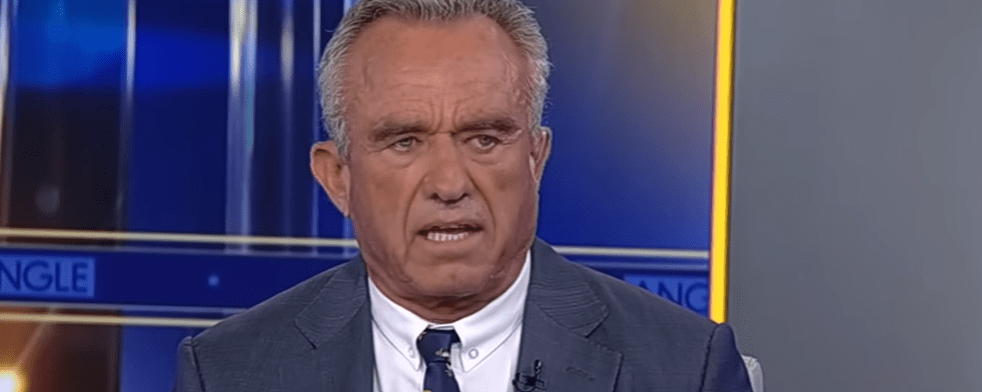In addition to federal institutions, the private biopharma industry has been affected by the Trump administration’s recent decision to lay off 10,000 employees from the U.S. Department of Health and Human Services (HHS). These cuts are presented as a cost-cutting measure that will lower federal spending by an estimated $1.8 billion a year. They are a part of a larger restructuring that Health Secretary Robert F. Kennedy Jr. has supported. However, the sudden change has caused significant instability for thousands of professionals and the organizations they worked for at a time when public health is especially vulnerable.
The first group of impacted workers faced a harsh reality in recent days. As a silent but startling reminder of their abrupt relocation, some people arrived at work to discover their security credentials deactivated. The National Institutes of Health (NIH), the Food and Drug Administration (FDA), and the Centers for Disease Control and Prevention (CDC) were among the agencies that suffered the most from the cuts, which reduced their responsibilities from research to supervision. Regulatory teams tasked with protecting America’s food and drug supply were impacted by the FDA losing 3,500 employees and the CDC losing 2,400 employees.
Health and Human Services Job Cuts – Workforce Restructuring Overview (WordPress-Ready Table)
| Division/Agency Affected | Jobs Cut | Original Staff Count | % Reduction | Refocused Role |
|---|---|---|---|---|
| Food and Drug Administration (FDA) | 3,500 | ~17,500 | 20% | Narrowed focus on essential food and drug safety protocols |
| Centers for Disease Control (CDC) | 2,400 | ~12,000 | 20% | Epidemic preparedness, infectious disease control only |
| National Institutes of Health (NIH) | 1,200 | ~18,000 | ~7% | Core biomedical research functions retained |
| Medicare & Medicaid Services | 300 | ~6,000 | 5% | Basic claims processing and regulatory support |
| Other Admin Roles (IT, HR, Finance) | 2,600 | Varies | Mixed | Eliminated overlapping operations in decentralized systems |
| Total Across HHS | 10,000 | 82,000 (pre-cuts) | ~12% | Streamlined federal healthcare apparatus |
Source: Pulmonology Advisor
The administration aims to create a more “accountable and agile” health agency by eliminating overlapping departments and combining regional offices from ten to five. In an open statement posted to YouTube, Kennedy said that more than half of HHS workers were allegedly not physically showing up for work. Across nearly a dozen HR divisions, dozens of procurement departments, and more than 100 communications units—many of which operated in operational silos—he underlined the extreme extent of duplication. Although his criticism highlighted inefficiencies in the bureaucracy, the extreme reaction has drawn close attention.

All industries adopted remote and hybrid work cultures during the pandemic. Kennedy’s remarks, which bear a striking resemblance to criticisms from the private sector, are indicative of a larger belief that the federal government needs to adopt a leaner model. However, people from all political parties have criticized the timing, which coincides with growing public health risks. These layoffs coincide with a growing measles outbreak, a resurgence of bird flu, and an ongoing fentanyl crisis, Senator Patty Murray noted.
Former Obama administration health adviser Dr. Anand Parekh made a particularly clear warning: if the CDC only focuses on infectious diseases, it is reverting to a mindset from the 1948 era and undervaluing chronic illnesses, which are now the leading causes of death. Although that limited shift might save money, it might jeopardize the long-term resilience of public health.
The impact has been significantly more severe for professionals in private biopharma. The industry, which is already dealing with a difficult job market, saw more than 4,000 layoffs in the first quarter of 2025. Now, there is much more competition for high-skilled positions as thousands of federal health specialists enter the workforce at once. BioSpace reports that during the first quarter alone, the number of job applications submitted via their platform increased by 91%.
By the middle of March, many job searchers were either forced to accept transitional roles outside of their area of expertise or discovered that they were overqualified for the positions that were offered to them. The disturbing change in career paths was highlighted by BioSpace recruitment lead Greg Clouse, who told the tale of a former manufacturing executive who is now working as a supply chain analyst. According to reports, more senior professionals are looking into “fractional executive” positions, which involve working part-time for several different companies. This suggests a particularly creative strategy for surviving a volatile market.
The rate at which the government is clearing out long-standing institutional memory raises more general concerns. Originally consisting of 28 operational divisions, HHS is currently being reduced to 15. This change is reminiscent of a well-known business strategy: automate, reassign, and consolidate. However, the ramifications of these choices affect the entire country, unlike private companies. For example, the FDA is essential in evaluating drugs, managing clinical trials, and guaranteeing the safety of food. Reduced enforcement and backlogged approvals may result from fewer people in these positions.
The National Treasury Employees Union released a statement within hours of the layoffs, describing the action as “deeply damaging” and reckless. President Doreen Greenwald underlined that cutting the FDA’s authority could endanger public confidence, especially at a time when vaccine skepticism and false information are still pervasive. The Administration for a Healthy America, a new organization established by Robert F. Kennedy Jr., was tasked with bringing prevention and chronic care strategies together under a single framework. Although the initiative seems very effective in theory, its practical efficacy has not yet been established.
The way that these federal changes reflect broader trends in Silicon Valley, finance, and now healthcare is especially telling. Downsizing has evolved into a philosophy rather than merely a cost-cutting strategy. Agencies are being redesigned as performance-driven, precision-focused organizations rather than broad public service platforms. Although this change may help reduce duplication, there is a genuine concern that it will make America less equipped to handle the next medical crisis.
The public’s trust in federal health authorities has already been eroded over the last ten years. Only if the remaining teams receive sufficient support and roles are redefined with clarity and purpose can this restructuring potentially restore efficiency. In the end, this more efficient design will “serve the American taxpayer better,” according to HHS leadership. However, it is understandably difficult for thousands of people who have lost their jobs to accept that optimism.
It is important to consider the psychological impact of these sudden departures. Former workers recount moments of incredulity and powerlessness, with some unable to access their personal belongings or emails. These are not merely figures; they are highly skilled professionals who were responsible for protecting the country’s health until recently.
Nevertheless, this moment may turn out to be a crucial turning point in the years to come. The reorganization might be remembered as remarkably successful if the Administration for a Healthy America achieves its goal of distributing resources across underserved communities. However, the consequences could go beyond employment statistics and affect the lives and general well-being of regular Americans if organizations like the FDA and CDC fail because of overworked teams and reduced staffing.






